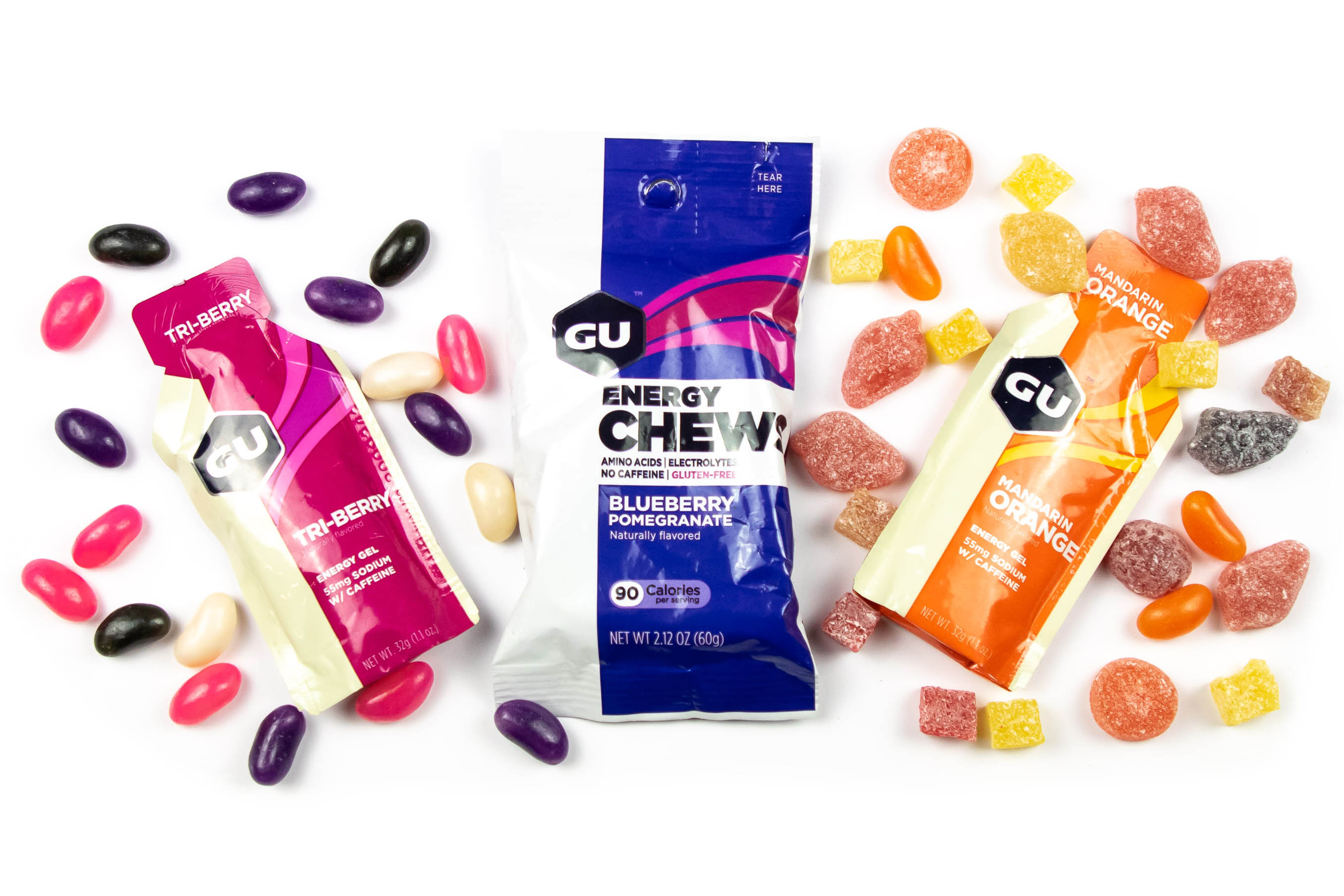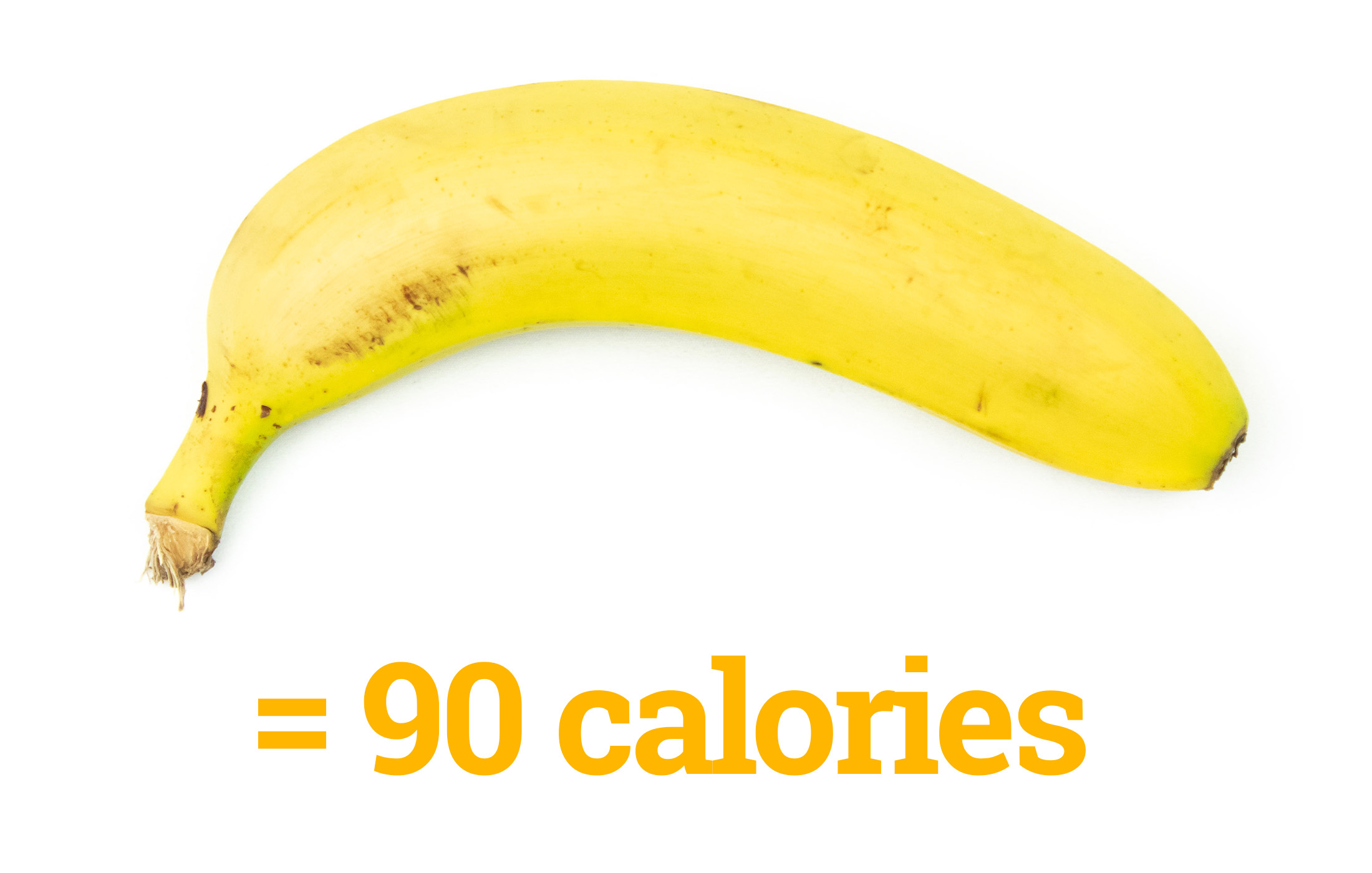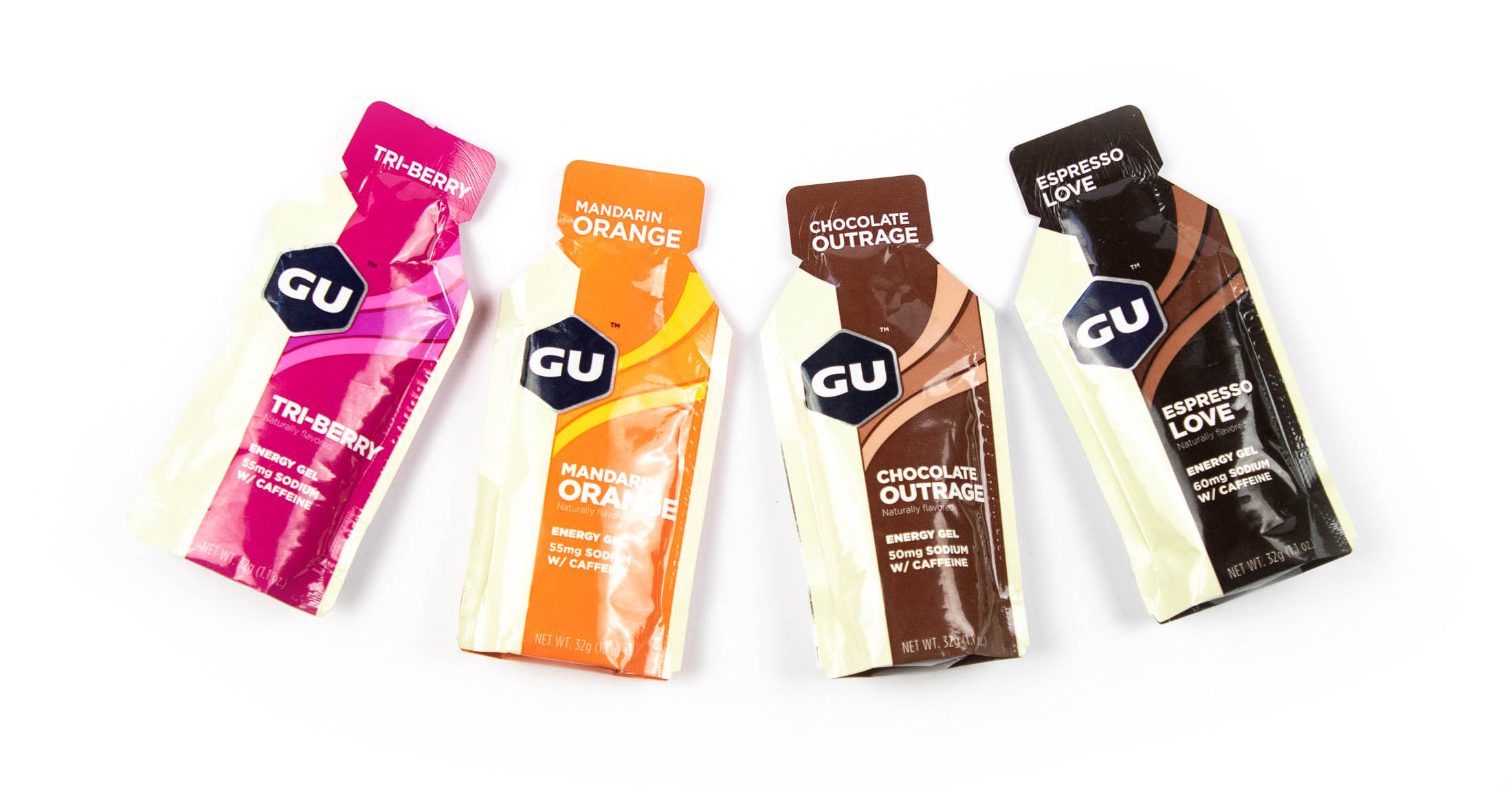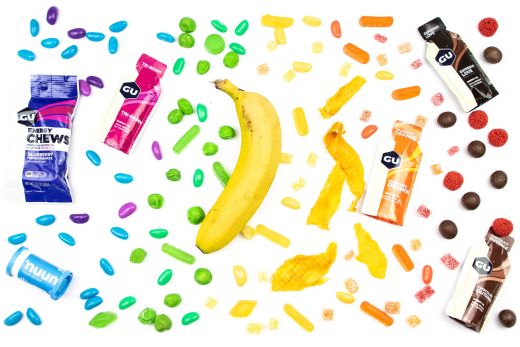If you’ve ever ‘bonked’ or ‘hit the wall’, you know what it feels like when your energy stores run out. Legs go limp, arms get heavy, and even just stumbling on seems impossible – a sure sign that you’ve spent all available energy and are running on fumes. The main reason for this empty tank feeling is insufficient carbohydrate intake, but carbs aren’t the only thing you have to replace during a long run or bike ride. In this article, I explain what endurance athletes need in terms of calories, electrolytes, and fluids, and then suggest strategies for replacing these without offending your digestive system.
What does your body need during sustained exercise?
Whenever you exercise for hours at a time, your body loses water and electrolytes in sweat, and it burns calories, mostly in the form of carbohydrates stored in your muscles and liver. These three things – carbs, electrolytes, and water – have to be replaced if you want to maintain any level of physical exertion.
Carbohydrates
Your muscles get energy from two sources: muscle glycogen, and blood glucose. If these are depleted, your body will convert liver glycogen into blood glucose, which can then be used by muscles and organs. The rate at which you burn glucose and glycogen depends on the intensity of the exercise. At a brisk pace, an athlete could burn 400 calories every 30 minutes, exhausting their entire energy reserve in just one and a half hours. At a more leisurely pace, your energy stores could last twice as long. If you’re going to push beyond this threshold, it’s important that you top up blood glucose levels. The fuels that can most easily be turned into glucose (best for exercising athletes) are sugars like sucrose, fructose and lactose.
Electrolytes
Electrolytes are essential minerals – sodium, potassium, and magnesium amongst others – that help maintain the acid-base balance in your body's cells and enable the proper function of muscles and organs. When you exercise, you lose these minerals through sweat, and if you perspire heavily for long enough – two hours or more – without replacing these lost electrolytes, you risk hyponatremia, a dangerous condition that can compromise performance and bring on symptoms like headaches, nausea, and poor balance. To combat this, athletes usually replace lost electrolytes in one of three ways: with a sports drinks, sodium tablets, or salty snacks.
H2O
You should aim to replace at least 75% but not more than 100% of all lost fluids. And you have to do this while also ensuring that you are getting enough electrolytes. If you drink too much water or dilute sports drinks (those without enough electrolytes), you can lower your blood sodium levels and risk hyponatremia. Ideally, you’d perform a test to determine how much you sweat and need to drink. If that’s not possible, aim to consume 400 to 800 milliliters of liquid every hour depending on your perceived sweatiness. Also, read my article on How to Stay Hydrated During Endurance Sport for a complete hydration strategy.
How many calories do you need to replace?
During sustained exercise, an athlete will expend more energy than she can replace. So, while a nutritionist might say you should aim to consume between 200 and 400 calories every hour, the real answer is ‘as many as can be properly digested.’ The maximum rate that glucose can be metabolised is about 1 gram per minute, and it’s recommended that endurance athletes consume somewhere between 30 to 60 grams of glucose (120 - 240 calories) every hour. Consuming simple sugars at a faster rate can cause bloating, cramps, and general GI discomfort. However, athletes participating in activities lasting longer than four hours can up their carbohydrate intake to 90 grams by consuming a mix of fuel types.
Why mix glucose and fructose?
The gut uses different pathways for different monosaccharides (glucose, fructose, and galactose), and larger amounts of sugar can be digested when your carbohydrates come from multiple sources. Glucose can be absorbed at a maximum rate of 60 grams per hour while fructose can be absorbed at a rate of 30 grams per hour. Clearly 90 grams of carbs is better than 60 grams, and athletes with higher than normal energy needs can benefit from ingesting a mix of glucose and fructose.

If you find yourself in this camp – needing to maximise carbohydrate intake for activities lasting several hours – you will certainly benefit from gels, chews and drinks that list fructose as an ingredient. But also know that fructose is also one of the simple sugars that makes up sucrose, the most common type of sugar. A maltodextrin-sucrose mix probably won’t give you the ideal 2:1 glucose-fructose ratio that is achievable with a maltodextrin-fructose mix, but it will be better than pure maltodextrin.
What’s in that?
When you look at the back of a bar wrapper or gel sachet, you’re unlikely to see glucose or galactose listed under nutritional information, and that’s because these don’t occur naturally in a pure form. The basic ingredients in fuel products are complex sugars comprised of whole chains of simple sugar molecules. These too have their own nutritional properties, and it’s best to understand the pros and cons of each before relying on any to fuel your next race.
Sucrose
Sucrose or cane sugar is the most common form of sugar and is probably what you’re adding to your coffee in the morning. It’s also one of the main ingredients in jelly sweets and soft drinks. One part glucose and one fructose, this sugar can be digested quickly and cab absorbed in larger quantities than either pure fructose or concentrated glucose syrup. It’s for this reason that sucrose is one of the most common ingredients in energy chews, gels, and sports drinks. In a list of ingredients, it might be described simply as ‘sugar’.
Glucose syrup
In foods, glucose is most commonly bound to another simple sugars to form complex sugars like sucrose and lactose. It does not occur in a pure form naturally and should not be confused with glucose syrup which is a concentrated sugar solution containing glucose and maltose. Glucose syrup is commonly found in jelly sweets like Wine Gums and Jelly Babies, and in certain baked goods. It is more concentrated than maltodextrin, and when it’s consumed in large quantities, it may need water to aid digestion and avoid GI distress.
Maltodextrin
Maltodextrin is a highly processed type of sugar, but that’s not a bad thing for athletes.
In this case it produces a sugar with a low osmotic concentration, allowing it to pass through the intestine wall more easily than other carbs. This quick and easy absorption makes maltodextrin an obvious choice for energy brands, who put it in everything from chews to sports drinks. When broken down, maltodextrin is comprised only of glucose, which is why it is often combined with sucrose (containing both fructose and glucose) to ensure a mix of simple sugars.
Fructose
Fructose is commonly found in fruit, honey, and energy products made by companies that claim that fructose helps improve total carbohydrate intake. It does, but here there needs to be a caveat: fructose has to be turned into glucose by the liver before it can be metabolized, a process that delays the availability of energy by two to three hours. That’s great if you’re trying to keep energy stores topped up over the course of a long run, but you need to remember that you need to consume that extra 30 grams per hour if you want to get your full 60 grams of instant energy.
Refueling considerations
The challenges of mid-exercise fueling are two fold. The first challenge is to replace calories when your metabolism is spending them like a drunken sailor on shore leave. The second challenge is to replenish those reserves in a way that doesn’t offend your digestive system. Overwhelming it with simple sugar or asking it to digest complex carbohydrates when your body has other priorities can cause indigestion and bloating. It's tricky but not impossible. Just keep these two things in mind.
Simple sugars first
Sugar has been given a bad rap, but for athletes it is an essential fuel type and doesn’t pose the risks (weight gain and metabolic disorders) that it can pose to less active people. Another misconception is that sugar consumption can hamper performance. Some athletes and coaches still believe that sugar consumption is likely to result in an energy crash and that slow-burning complex carbohydrates are a better way to ensure a steady supply of energy. The truth is that the human body is incapable of absorbing digested carbohydrates as quickly as it can metabolize them, and there is no advantage to relying on carbohydrates that take longer to digest.
Reactive hypoglycemia, which can affect someone at rest, simply doesn’t happen to someone who is exercising. No matter how much simple sugar you consume, you will not experience a rapid decline in blood glucose (sugar crash) brought on by excessive insulin release. The bottom line is that, when exercising, you should first turn to the types of carbohydrates that will be absorbed fastest, and that means simple sugars: glucose, fructose, sucrose.
When to include complex carbohydrates
For athletes, the only major drawback to simple sugars is that your GI tract can only digest so much of it in a given timeframe. If your sugar consumption exceeds this rate, some of it will go undigested and cause bloating and general GI distress. This limitation is generally only a factor for athletes who are on the go for several hours and who have energy requirements that far exceed the amount of sugar they can digest.

In such instances, a mixed-fuel strategy is often the best approach. At marathon pace, the intensity of activity is usually low enough to allow for the digestion of complex carbs like the starches found in bars, pastries, bananas and sandwiches. These slow burning carbs have the advantage of lowering the risk of GI distress when combined with simple sugars in a mixed-carb strategy, and they can help break the sticky sweet monotony of simple sugars.
Fuel sources
With a wide variety of liquids, solids, and semi-solids, there’s no reason to subject yourself to the monotony of a single fuel source, nor is it advised if you’re going to be on the go for several hours. Your digestive tract can absorb only so much of a specific simple carbohydrate in a certain amount of time, and if you want to optimise calorie intake, it pays to practice a little strategic diversification.
Real food
When the pace slows, real foods like pastries, cookies, bananas and dried fruit also become an option. Like bars, these can give you a much needed break from sugar, but have to be chosen for easy digestibility. Foods that are very high in fat or protein can cause cramping or tiredness since they require your body to spend extra energy just on digesting them. This is why trail mix, which can be up to 50% nuts, is not a good choice for endurance events. While it’s a good fuel for slow, stop-start activities like hiking and climbing, nuts and seeds take too long to be converted into energy to be a good fuel source for runners and cyclists. For easier-to-digest fats and proteins, rather go with boiled eggs and peanut butter snacks.
Energy bars
The advantage of energy bars is that they’re not all sugar. The good ones contain a mix of fat, protein, and carbohydrates. Of course, it’s not easy to digest these more complex foods when they’re been jiggled around in your stomach at race pace. But at slower speeds, like those you’d run an ultra at, these tasty snacks start to become an option. While many contain as little as 20 grams of sugar per bar, they make up for it by including up to 20 grams of other carbs, 13 grams of protein, and 5 grams of fat. This kind of calorie mix can help prevent the GI distress and monotony that comes from consuming large quantities of sugar.
Sports drinks
Sport drinks come ready-to-drink in bottles and as powders or tablets that you need to mix with water. Bottled drinks might be convenient, but they often don’t contain a high enough concentration of electrolytes. Drinks developed specifically for athletes should contain both carbohydrates (a 3% sugar concentration will aid absorption of both water and nutrients) and a complete profile of electrolytes in a concentration that’s only slightly hypotonic (less concentrated than blood – 280 mOsm/kg). The intake of liquids that are too dilute can result in hyponatraemia or low blood sodium, so it’s important that you look for a mix with at least 250 milligrams of sodium (and no more than 400 milligrams) for every litre of water.
Jelly sweets
Jelly babies, Wine Gums and Gummies often taste better than gels and are good sources of simple sugar. The downside to jelly sweets is that many contain glucose syrup, which means a greater risk of GI distress. Before setting off on an ultramarathon with just a few packets of Percy Pigs, it would be best to test out your refueling strategy on some longer training runs lest your choice of sugar doesn’t sit well with your digestive tract. Jelly sweets also don’t contain electrolytes and so are not a good choice if you’re going to rely on non-liquid fuel sources for electrolytes.
Energy gels and chews
Gels and chews have pretty much the same ingredients but with varying amounts of water. Chews are less messy and pack more calories per gram, but gels can be easier to get down when you’re tired. It’s almost a given that a gel or chew will contain electrolytes and maltodextrin or sucrose.

Those not a big difference between these two sugars, the real difference between comparable products will be in the other ingredients used. Some products contain fructose to enable maximum carbohydrate absorption while others include caffeine to bring on a little buzz and make later miles feel easier. And some, like my personal favourite, GU’s Caramel Macchiato Energy Gel, contain both. A 32g sachet of gel will contain about 25 grams of carbohydrates or 100 calories.
| Energy source | Grams carbs | Calories |
| 500 ml (17 oz) of sports drink (3% sugar) | 15 | 60 |
| 500 ml (17 oz) of sports drink (6% sugar) | 30 | 120 |
| 32 g (1.1 0z) packet of gel | 25 | 100 |
| 190 g packet of Jelly Babies | 21 | 84 |
| 68 g energy bar | 44 | 250 |
| 100 g banana | 12 | 90 |
Figures shown are averages.
Refueling strategies
Activities of different lengths require different strategies. Here I’ve categorised activities as short (less than 1 ½ hours), medium to long (1 ½ to 4 hours).
Short activities (under 1 ½ hours)
If you start an hour-long activity properly fueled and hydrated, you’ll probably gain little from taking in large amounts of anything – water, electrolytes or carbohydrates – during the activity itself. Your body has what it needs in reserve to go this long without refueling. This doesn’t mean you shouldn’t consume anything during exercise lasting less than 90 minutes. You should listen to your body and eat or drink if you feel you really need to.
Medium to long activities (1 ½ to 4 hours)
It’s during medium-to-long activities that refueling and liquid intake really starts to have an effect on performance. To replace spent glycogen stores, you need around 60g of carbohydrate per hour, or maybe as little as 40 grams per hour if you’re on the smaller side. Since you’re going to be on the move for no more than four hours, you can get by on just gels and jelly sweets along with a bottle or two of sports drink. Depending on how much you’re perspiring, you’ll need to drink up to 800 millilitres of fluids every hour. This much hypotonic sports drink (250 mOsm/kg is the best concentration for maximum water and electrolyte absorption) will contain around 30 grams of sugar, meaning that you would need to consume only another 30 grams in solids and semisolids (roughly 1 ½ gel sachets) to meet your 60 gram simple sugar limit.
Ultra-long activities (over 4 hours)
During ultra long events it’s important to delay completely depleting your energy stores for as long as possible (remember, you cannot replace energy stores as fast as you can burn through them), so it becomes important to raise your carbohydrate intake to 90 grams a hour. To do that without experiencing the bloating or sickly feeling that comes with ingesting too much glucose, you have to get a bit of variety into your carbs. Fortunately, you’ll be moving at a slower pace and will be able to digest the odd bar or starchy snack. On that note, savoury pastries, biscuits and salted potatoes are also a good way to get a little extra sodium while you’re on the move.
Test and refine
To properly prepare for a big event, it really helps to develop your own refueling and hydration plan. There’s no single strategy that works for everyone, and you can’t be sure that your buddy’s complete reliance on Reece’s Peanut Butter Cups isn’t going to give you a case of the cramps. Rather, do a little experimenting during practice events to figure out what’s going to work best for you. By the time the big day comes round you should have a tried and tested recipe for optimum carb and fluid intake, knowing what you’re going to eat and drink, how much you’re going to consume, and when. By keeping your tank topped-up, you’ll avoid that dreaded hitting-the-wall feeling and just have a better time.
